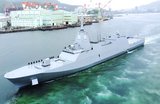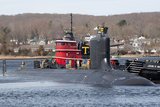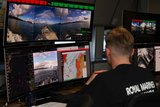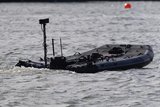Successful test of Lockheed Martin's Joint Air-to-Surface Standoff Missile validates missile upgrades
A Lockheed Martin Joint Air-to-Surface Standoff Missile (JASSM) underwent a successful Product Upgrade Verification (PUV) flight test on January 12 at White Sands Missile Range, NM. The missile was released from a B-52 aircraft and successfully navigated through a preplanned route before destroying its intended target.
The primary test objectives of this flight were to provide final validation of a new missile control unit, recently upgraded actuator control electronics and a digital engine controller. The upgrades enhance missile performance and eliminate the risk of future component obsolescence.
"This flight test continues our successful efforts to expand missile capability and demonstrate reliability," said Alan Jackson, JASSM program director at Lockheed Martin Missiles and Fire Control. "Flight validation of JASSM upgraded electronic subassemblies allows us to proceed with JASSM production well into the next decade."
JASSM is ahead of schedule to meet the new goal of 90 percent reliability by Lot 11. JASSM-Extended Range (ER), the longer range version of JASSM, has a 100 percent success rate. The ER system is 6 for 6 in flight tests.
JASSM continues to be a critical weapon for the US Air Force, with the eighth production lot under contract toward a total objective of 4,900 JASSMs and JASSM-ER. The baseline JASSM is also being produced for foreign military sale. Its ability to be integrated on multiple aircraft has been successfully demonstrated on the B-1, B-2, B-52 and F-16 aircraft. Future platforms include the F-15E, F/A-18 and F-35.
The missile is produced at Lockheed Martin's award-winning manufacturing facility in Troy, AL. Lockheed Martin has assembled approximately 960 JASSM missiles in Troy since late 1999 for testing and for operational use.
A 2,000-pound class weapon with a penetrator/blast fragmentation warhead, JASSM cruises autonomously in adverse weather, day or night, using a state-of-the-art infrared seeker in addition to the anti-jam GPS to find a specific aimpoint on the target. Its stealthy airframe makes it extremely difficult to defeat.
Source: Lockheed Martin
More from Naval Warfare
-
![UK to join US Navy’s Virginia-class submarine assembly effort to speed up construction]()
UK to join US Navy’s Virginia-class submarine assembly effort to speed up construction
The expansion of the Virginia-class submarine construction to UK shores could accelerate the project as US shipbuilders continue to fall short of delivery goals.
-
![US Navy seeks new sensors for the CH-53K King Stallion heavy-lift helicopter]()
US Navy seeks new sensors for the CH-53K King Stallion heavy-lift helicopter
The US Navy intends to publish a draft request for proposals in Q2 2026 and conduct an open competition for the supply of new electro-optical and infrared capabilities for the CH-53K heavy-lift helicopter.
-
![What new technologies could be involved in UK Atlantic Bastion initiative?]()
What new technologies could be involved in UK Atlantic Bastion initiative?
As new details emerge on the UK Royal Navy’s plan to secure the North Atlantic for the UK and NATO, three main areas of opportunity for new technology are the focal point.
-
![NATO naval exercises map out future USV requirements but raise questions on acquisition]()
NATO naval exercises map out future USV requirements but raise questions on acquisition
Uncrewed surface vessels have shifted from a desirable capability to a critical one for navies. But should these systems be bought outright, rented as a service or rapidly built using commercial off-the-shelf components?























